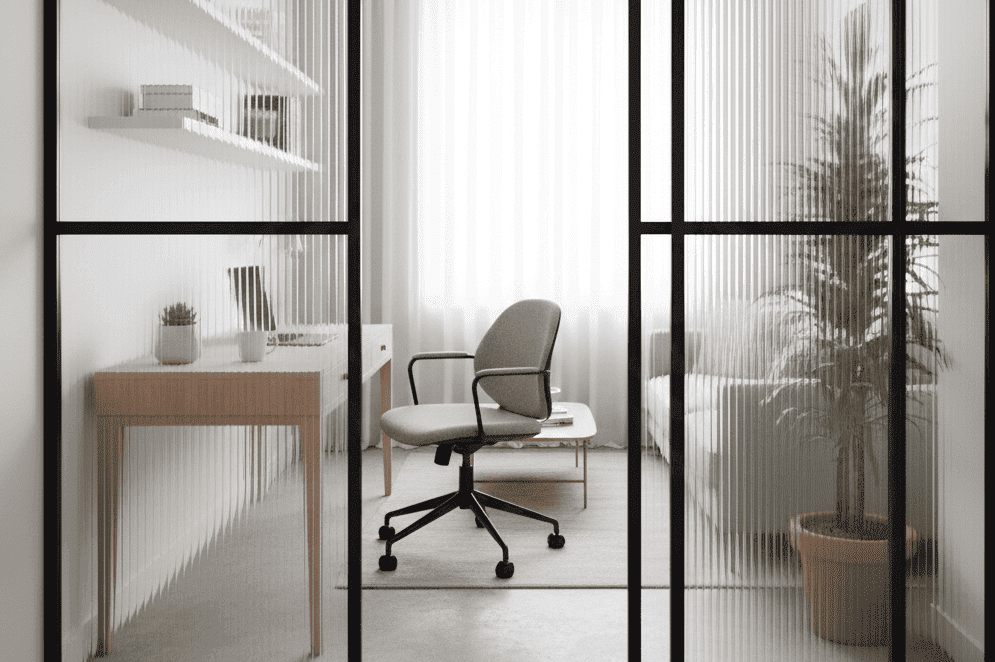5 Smart Ways to Organize a Home Office
Working from home is both blessing and curse. You can wear slippers all day, but you also risk working in the same spot you nap or eat dinner. That blur kills focus. A proper home office isn’t about luxury—it’s about structure, comfort, and small tricks that bend the space to your will.
I’ve built offices in bedrooms, corners of kitchens, and once in a hallway so narrow I had to squeeze past the chair to reach the bathroom. What matters isn’t square footage. It’s intent. So here are five approaches that keep me sane, inspired, and just productive enough to keep the bills paid.
1. Define Your Zone
The biggest mistake? Working at the dining table with your laptop and calling it an office. You need a defined area. Doesn’t matter if it’s big. It needs edges—physical or visual.
Try simple space zoning by placing a rug under your desk or shifting a bookshelf to carve out a section. Even rearranging a sofa can separate work from lounging. The brain craves boundaries, and without them you’ll never really “leave the office,” even at midnight.
One of my favorite tricks is using open shelving as both storage and partition. You see through it, but it still declares, “this is where work begins.”
And don’t underestimate how much atmosphere matters. Add a small plant on the edge of your desk to signal freshness, or hang a piece of art behind your chair so the backdrop feels intentional during video calls. Even the smallest visual clues shape how you behave. A rug, a lamp, a piece of furniture in just the right spot—all these details shout “work mode” to your brain.
The key is consistency. If you treat that zone with respect, you’ll eventually build a ritual around it: sit down, get to work. That mental boundary is priceless when your home is constantly pulling you toward distractions.
2. Materials that Motivate
The feel of your desk, the chair fabric under your hands—these little things add weight. Premium materials aren’t about showing off; they’re about atmosphere.
I’ve seen setups where reclaimed wood desks give character, where recycled aterials in shelving add depth. When your workspace feels tactile, grounding, you naturally treat it with more respect. That respect nudges you toward discipline.
Even a linen curtain filtering sunlight can shift the vibe from “temporary laptop spot” to “dedicated office.” Your body responds differently to spaces that feel intentional.
3. Let the Light Work for You
Bad light is poison. Dim corners kill energy, harsh overhead glare fries your brain. Home offices need layers of light. Desk lamps for focus, warm side lamps for late evenings, maybe a pendant overhead for balance.
Natural light is a bonus, not a luxury. Position your desk sideways to a window—never behind, never in front. Side light keeps glare away but still brings rhythm from the outside world. That passing sun, the shift of shadows, it resets your focus better than coffee.
And if you can’t get enough daylight, mimic it. LED lamps with adjustable warmth can trick your body into believing it’s still morning when you’ve hit 4 p.m. burnout.
4. Divide Without Closing Off
Some people need silence. Others crave a bit of household buzz while they type. Either way, walls often feel suffocating. That’s where frameless glass dividers shine. They offer separation without cutting light or airflow.
Некоторые предпочитают использовать home office glass partitions, чтобы отделить рабочее место от жилой зоны.
The beauty is flexibility—you can slide them open when you want to feel part of the home, then close them when you need laser focus. That balance of transparency and privacy creates a workspace that adapts to mood and task.
5. Function Over Noise
You don’t need twelve gadgets or a dozen drawers. You need function that flows. A desk large enough to spread papers but not so big it eats the room. Storage tucked near, not across the hall. Cables hidden.
The smartest offices are built around functional hubs. A corner where your printer, charging station, and filing box live together. A wall where whiteboard, shelves, and task lighting align. It’s less about buying more and more about letting every square foot earn its keep.
And when the office feels aligned—where nothing jars or shouts—you work better. Quiet design equals louder focus.
| Idea | Why It Works | Extra Tip |
|---|---|---|
| Desk near window | Natural light boosts energy and focus | Position sideways to avoid screen glare |
| Open shelving | Doubles as storage and divider | Style with books and plants for balance |
| Task lighting | Keeps eyes fresh and improves mood | Mix warm and cool bulbs for flexibility |
| Rug under desk | Creates a visual zone | Choose textured fabric for sound absorption |
| Hidden storage | Reduces clutter | Use boxes or baskets that match your palette |
Final Thoughts
A home office doesn’t need to be flashy. It needs to be thought through. Shape zones, choose materials you love, light it properly, divide smartly, and let function run the show. Do that, and your productivity jumps—not because you forced it, but because the room itself carries you forward.
And the beauty is, it doesn’t have to be complicated. What makes a space work is usually invisible at first glance. The desk you actually want to sit at every morning. The chair that doesn’t punish your back. The little rituals that start when you step into that space.
Think of your office less like a corner for work and more like a stage for habits. The props you choose matter. One misplaced item—like a laundry basket in the corner—can drag your energy down, while a single inspiring poster or plant can change the whole tone. It’s small psychology, but it’s powerful.
I’ve also noticed that the most productive spaces usually share a few traits: they’re consistent, uncluttered, and forgiving. You don’t want a room that feels like a sterile showroom. You want one that lets you breathe, shift, and adapt without chaos.
Here are a few quick ways to keep your office balanced:
- Prioritize comfort first. Fancy desks mean nothing if your chair ruins your back.
- Hide what distracts. Cables, clutter, piles of paper—tuck them out of sight.
- Add layers of light. One bulb overhead is never enough; mix task and ambient lighting.
- Bring in life. A plant, even the smallest one, gives energy to the room.
- Keep color calm. Neutrals with a single accent tone help focus without boredom.
Your home office is more than a workspace—it’s an extension of your head. If it’s chaotic, you’ll feel it. If it’s structured but alive, you’ll thrive in it. The real secret isn’t money or square footage; it’s the choices you repeat every day.

FAQs
Q: How small can a productive home office be?
A: Even a corner or a closet can work, if you zone it properly and give it focus.
Q: What’s the cheapest upgrade for a home office?
A: Lighting. A good desk lamp transforms mood and energy instantly.
Q: Are glass partitions worth it in small apartments?
A: Yes. They keep the space open, airy, and flexible while still creating privacy.
Q: How do I stop my home office from feeling sterile?
A: Add texture—wood, fabric, personal items. Even one reclaimed desk can anchor the whole room.
